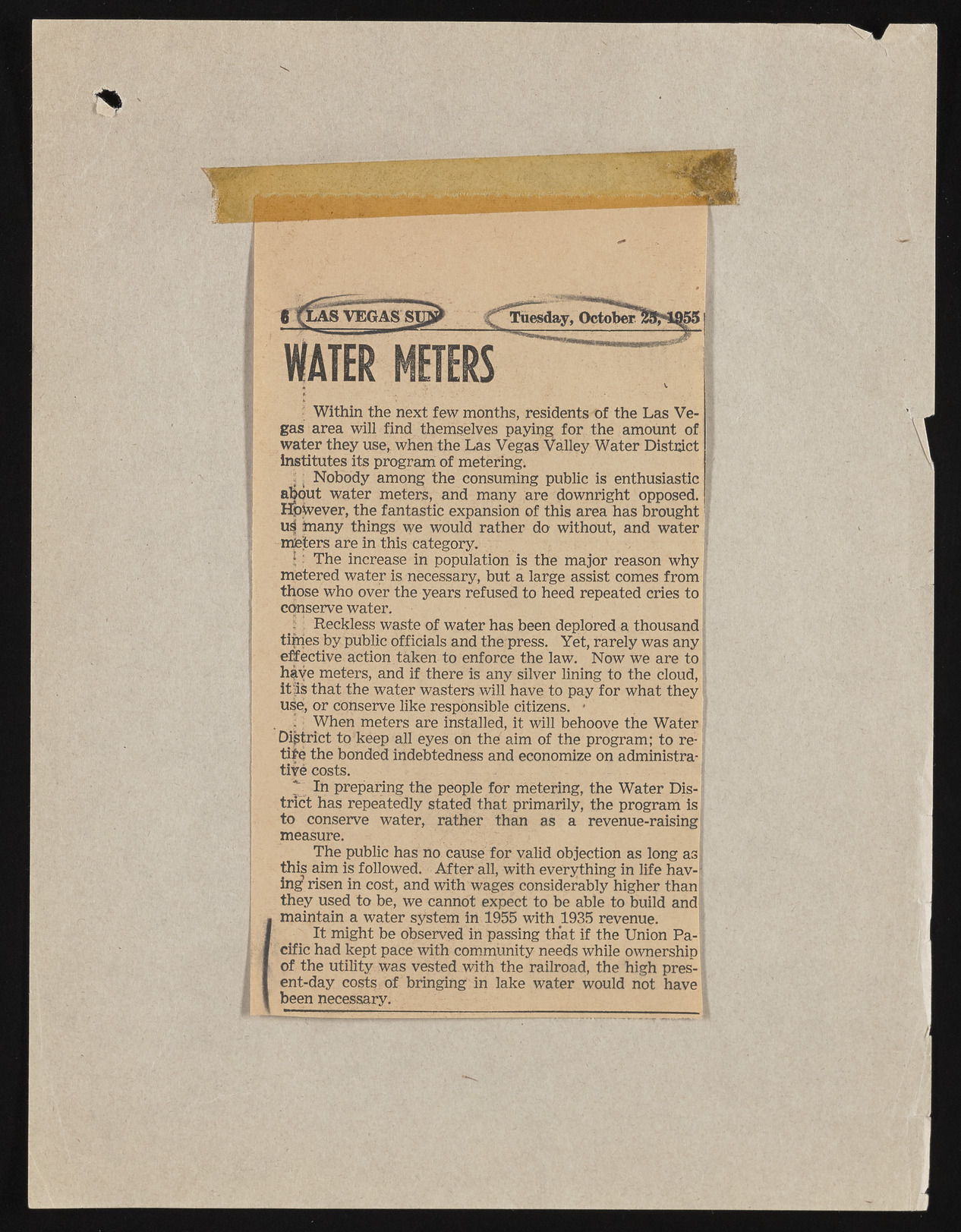Copyright & Fair-use Agreement
UNLV Special Collections provides copies of materials to facilitate private study, scholarship, or research. Material not in the public domain may be used according to fair use of copyrighted materials as defined by copyright law. Please cite us.
Please note that UNLV may not own the copyright to these materials and cannot provide permission to publish or distribute materials when UNLV is not the copyright holder. The user is solely responsible for determining the copyright status of materials and obtaining permission to use material from the copyright holder and for determining whether any permissions relating to any other rights are necessary for the intended use, and for obtaining all required permissions beyond that allowed by fair use.
Read more about our reproduction and use policy.
I agree.Information
Digital ID
Permalink
More Info
Rights
Digital Provenance
Publisher
Transcription
? Within the next few months, residents of the Las Vegas area will find themselves paying for the amount of water they use,, when the Las Vegas Valley Water District institutes its program of metering. 11 Nobody among the consuming public is enthusiastic about water meters, and many are downright opposed. HpWever, the fantastic expansion of this area has brought uS many things we would rather do without, and water i mteters are in this category. {- The increase in population is the major reason why | metered water is necessary, but a large assist comes from ? those who over the years refused to heed repeated cries to 1 conserve water. ^ Reckless waste of water has been deplored a thousand I times by public officials and the press. Yet, rarely was any l effective action, taken to enforce the law. Now we are tof h^ve meters, and if there is any silver lining to the cloud, $ itps that the water wasters will have to pay for what they I use, or conserve like responsible citizens. • j : When meters are installed, it will behoove the Water J District to keep all eyes on the aim of the program; to re- > tife the bonded indebtedness and economize on administra- ‘ tire costs. ~ In preparing the people for metering, the Water Dis- ;; trict has repeatedly stated that primarily, the program is = to conserve water, rather than as a revenue-raising measure. The public has no cause for valid objection as long asj this aim is followed. After all, with everything in life hav-l ing risen in cost, and with wages considerably higher than ; they used to be, we cannot expect to be able to build and! maintain a water system in 1955 with 1935 revenue. It might be observed in passing that if the Union Pa- | cific had kept pace with community needs while ownership ! of the utility was vested with the railroad, the high pres-f ent-day costs of bringing in lake water would not have j been necessary.

